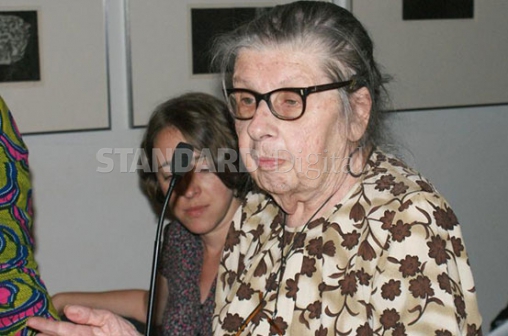
NAIROBI: The annual Easter weekend, just like Christmas and other Christian holidays, are immensely popular worldwide. In Kenya the days are constitutional national holidays celebrated with a lot of fanfare it is hard to believe that, while Christianity is more than 2016 years old, in Kenya the religion is less than 200 years old.
And as Kenyans massacre goats and chickens while others travel upcountry to celebrate the resurrection of Christ – which forms the basis of Christian salvation - perhaps not many realise the faith was ushered into the country against a wall or cultural and political resistance that would later shape the historical and literary future of the country.
It started with the arrival of Vasco da Gama in Mombasa on a Saturday afternoon. The day was April 7, 1498. He was not there to preach the gospel, but looking for a sea route to India and look for foreign lands to plunder and thereby massage his country’s imperialist ego.
Once in Mombasa, Vasco Da Gama was taken in by the beauty and massive deposits of gold and other resources in the area then governed by a sultan. He then sent word to Lisbon for reinforcement. The teams that joined Da Gama later included army chaplains who may have sown the first Christian seeds in an area dominated by Muslims and traditional religions. But such seeds failed to sprout. In fact, so dismally did the Portuguese Christian mission fare that by 1506, only 40 people were willing to convert, as indicated in one letter to Portugal dated August 31, 1506, which E Axelson captures in South-East Africa.
The reason the Portuguese couldn’t leave a strong mark at the Coast was that they were so cruel, kept concubines, robbed locals of their livestock and were generally not good Christians and were eventually overrun by the sultans.
And even in the 19th Century, the success of the missionaries was purely a matter of historical happenstance. John Ludwig Krapf, a German who had tried to evangelise the Galla in Ethiopia to no avail, landed at the Coast of Mombasa in 1844. His wife, Rosine, and her one baby died barely two months later, but that did not deter him from his evangelical mission.
Johannes Rebman joined Krapf in 1846, and they joined forces with the Church Mission Society (CMS and the East African Scottish Mission (EASM) (later to be called the Presbyterian Church of East Africa). EASM and CMS were received very well; not because the people had forgotten about the Portuguese, but because there were many freed slaves who needed help. The rescued slaves ended up converting to Christianity.
Took up the challenge
No one has captured the feeling of the moment better than literary scholar and thespian David Mulwa in his award winning novella, We Come in Peace (2011) and its sequel, Flee, Mama Flee (2014). Mulwa shows how the cruelty of slave trade led the freed slaves to readily embrace Christianity even after the revolt that had earlier greeted the Portuguese.
Another major historical happenstance would propel Christianity into the hinterland. In 1888, the East Africa became a British protectorate under the royal Imperial British East Africa (IBEA) company. IBEA was then headed by director William Mackinon, a Scott who encouraged the largely Scottish missionaries to venture farther into the interior of East Africa. James Stewart took up the challenge and set off on September 19, 1891 with seven missionaries and 273 porters. Their mission was to reach the Southern Kikuyu area, which was under the leadership of Muthamaki Waiyaki wa Hinga. Stewart’s mission however stalled at Kibwezi due to the hostility they encountered there. When Stewart reached Kikuyuland in 1898, he would have been met with a lot of resistance. Captain Frederick Lugard of the IBEA had set foot there earlier and after being welcomed by Muthamaki Waiyaki, he had moved to Uganda and was replaced by a cruel administrator named George Purkiss. Purkiss, or ‘Mbaya’ (bad one) as the locals called him, lorded over a cruel team that oppressed the locals and had Waiyaki deported from his own land and cruelly murdered and buried in an unmarked grave at Kibwezi.
Luckily for Stewart, he arrived when Kikuyuland was in the grip of a great famine and a disease outbreak. The local people, who otherwise had no time for another white, were dying of hunger and disease and needed help. It is his team’s readiness to offer humanitarian help that endeared him to locals. Thus the church established its foothold in present-day Kiambu.
In Western Kenya, it started with Bishop James Hannington, the Church Mission Society’s (CMS) first Bishop at Rabai. The man went to Uganda but ended up being killed on orders of Kabaka Mwanga in October 1885. The order was issued when a seer warned the Kabaka that the white man was a bad omen and his new religion boded ill for the kingdom.
Three years later, CMS sent Bishop Alfred Robert Tucker to retrieve the body of Hannington for proper burial. Tucker reached Mumias and Nabongo Mumia – a Muslim – sent a man called Otsyalo to help Tucker. Otsyalo returned with Hannington’s body and it was buried where Bishop Hannington’s Cathedral stands today in Mumias. In Nyanza, the Uganda Railway reached Kisumu and opened the way for evangelisation of the area at about the same time.
Besides hostility to white folk sparked by the cruelty of the IBEA and the Portuguese explorers, Christianity faced a major obstacle when the State of emergency was declared. The demand for land and rights among Africans was so steadfast and no one could draw a line between a colonialist and an evangelist, which forms a major theme in African literature where it is said the white man came with a gun in one hand and a bible in the other.
Besides hostility, the Christian fraternity had by now splintered into smaller groups. There were the Catholics and the protestants. Among the protestants were the independent churches and those who had acquiesced to the white man’s ways.
No one captures this divide better than Ferdinand Oyono in Houseboy , which uses the diary narrative technique to satirise Toundi, a young man who is rotting before he dies after insulting his own father and offering himself up for oppression in white men’s houses. Another example is Achebe’s Arrow of God where Ezeulu has been the chief priest of the land who presides over such cultural rites and festivals, but whose clout has reached its zenith after the people stop listening to him in favour of the Christian faith.
Among the independent churches were those not ready to do away with traditional practices like female circumcision, a matter explored in Ngugi wa Thiong’os The River Between and Okot P’Bitek’s great works, Song of Lawino and Song of Ocol.
As a matter of fact, the cultural conflict between Africa and the West formed the foundation of African literature. After independence, the greatest literary debate revolved around whether African literature and culture should be based on autochthonous pre-colonial realities or from a Euro-colonial perspective.
It is this dilemma that set Thiong’o, Awuor Anyumba and my friend Taban Lo Liyong apart at the University of Nairobi. It is the reason literary scholars from that time are to this day split between those who dropped their Christian names and those who did not.
And as we wolf meaty chunks and break the fast with copious amounts of drinks, it is hard not to marvel how far the faith has come in so short a time and the profound manner it has affected our literature, not least by giving us missionary writers such as the late Marjorie Oludhe Macgoye, who came to Kenya as a missionary.
 The Standard Group Plc is a multi-media organization with investments in media platforms spanning newspaper print
operations, television, radio broadcasting, digital and online services. The Standard Group is recognized as a
leading multi-media house in Kenya with a key influence in matters of national and international interest.
The Standard Group Plc is a multi-media organization with investments in media platforms spanning newspaper print
operations, television, radio broadcasting, digital and online services. The Standard Group is recognized as a
leading multi-media house in Kenya with a key influence in matters of national and international interest.

